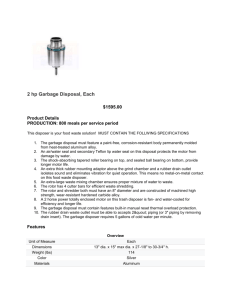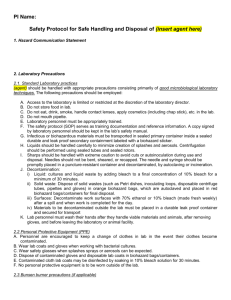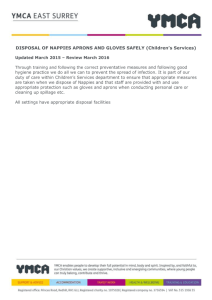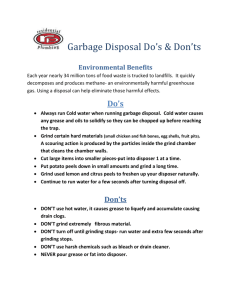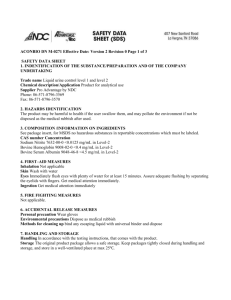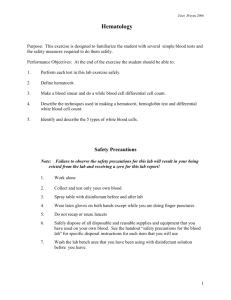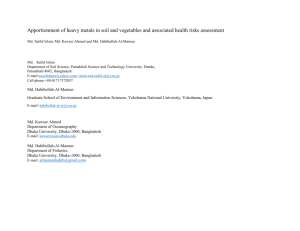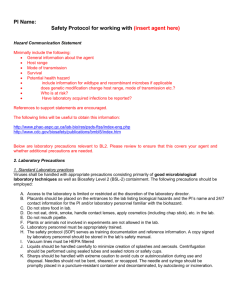Medical Waste Disposal SOP: Regulated Waste Management
advertisement
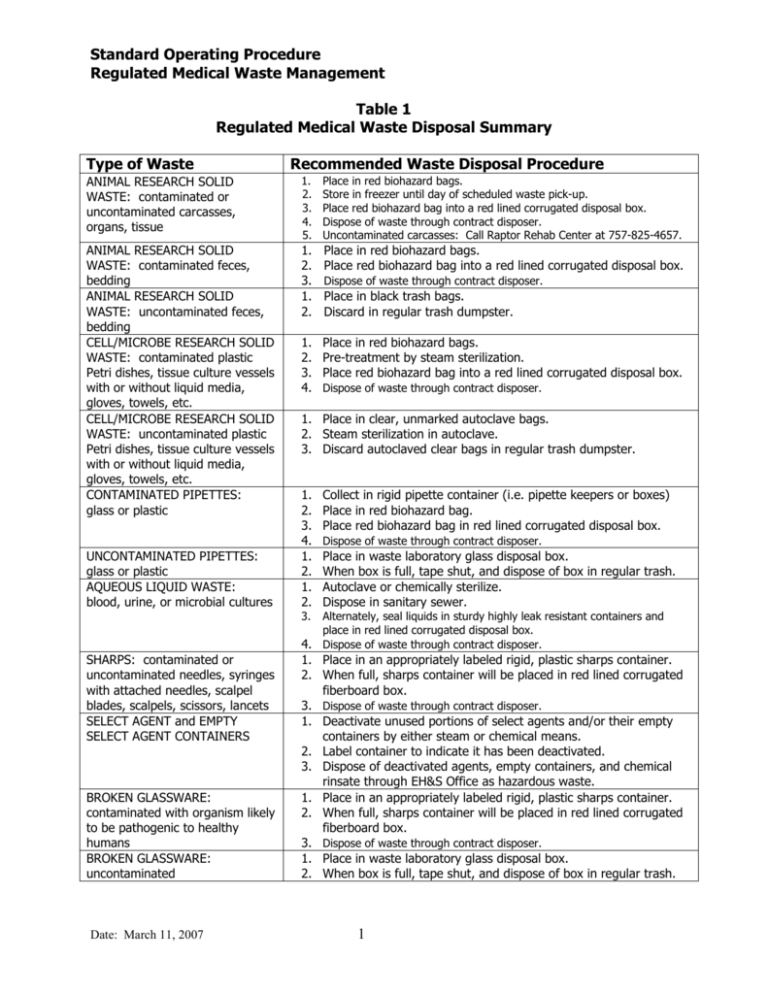
Standard Operating Procedure Regulated Medical Waste Management Table 1 Regulated Medical Waste Disposal Summary Type of Waste Recommended Waste Disposal Procedure ANIMAL RESEARCH SOLID WASTE: contaminated or uncontaminated carcasses, organs, tissue 1. 2. 3. 4. 5. Place in red biohazard bags. Store in freezer until day of scheduled waste pick-up. Place red biohazard bag into a red lined corrugated disposal box. Dispose of waste through contract disposer. Uncontaminated carcasses: Call Raptor Rehab Center at 757-825-4657. ANIMAL RESEARCH SOLID WASTE: contaminated feces, bedding ANIMAL RESEARCH SOLID WASTE: uncontaminated feces, bedding CELL/MICROBE RESEARCH SOLID WASTE: contaminated plastic Petri dishes, tissue culture vessels with or without liquid media, gloves, towels, etc. CELL/MICROBE RESEARCH SOLID WASTE: uncontaminated plastic Petri dishes, tissue culture vessels with or without liquid media, gloves, towels, etc. CONTAMINATED PIPETTES: glass or plastic 1. 2. 3. 1. 2. Place in red biohazard bags. Place red biohazard bag into a red lined corrugated disposal box. 1. 2. 3. 4. Place in red biohazard bags. Pre-treatment by steam sterilization. Place red biohazard bag into a red lined corrugated disposal box. UNCONTAMINATED PIPETTES: glass or plastic AQUEOUS LIQUID WASTE: blood, urine, or microbial cultures SHARPS: contaminated or uncontaminated needles, syringes with attached needles, scalpel blades, scalpels, scissors, lancets SELECT AGENT and EMPTY SELECT AGENT CONTAINERS BROKEN GLASSWARE: contaminated with organism likely to be pathogenic to healthy humans BROKEN GLASSWARE: uncontaminated Date: March 11, 2007 Dispose of waste through contract disposer. Place in black trash bags. Discard in regular trash dumpster. Dispose of waste through contract disposer. 1. Place in clear, unmarked autoclave bags. 2. Steam sterilization in autoclave. 3. Discard autoclaved clear bags in regular trash dumpster. 1. 2. 3. 4. 1. 2. 1. 2. 3. Collect in rigid pipette container (i.e. pipette keepers or boxes) Place in red biohazard bag. Place red biohazard bag in red lined corrugated disposal box. Dispose of waste through contract disposer. Place in waste laboratory glass disposal box. When box is full, tape shut, and dispose of box in regular trash. Autoclave or chemically sterilize. Dispose in sanitary sewer. Alternately, seal liquids in sturdy highly leak resistant containers and place in red lined corrugated disposal box. 4. Dispose of waste through contract disposer. 1. Place in an appropriately labeled rigid, plastic sharps container. 2. When full, sharps container will be placed in red lined corrugated fiberboard box. 3. Dispose of waste through contract disposer. 1. Deactivate unused portions of select agents and/or their empty containers by either steam or chemical means. 2. Label container to indicate it has been deactivated. 3. Dispose of deactivated agents, empty containers, and chemical rinsate through EH&S Office as hazardous waste. 1. Place in an appropriately labeled rigid, plastic sharps container. 2. When full, sharps container will be placed in red lined corrugated fiberboard box. 3. Dispose of waste through contract disposer. 1. Place in waste laboratory glass disposal box. 2. When box is full, tape shut, and dispose of box in regular trash. 1
